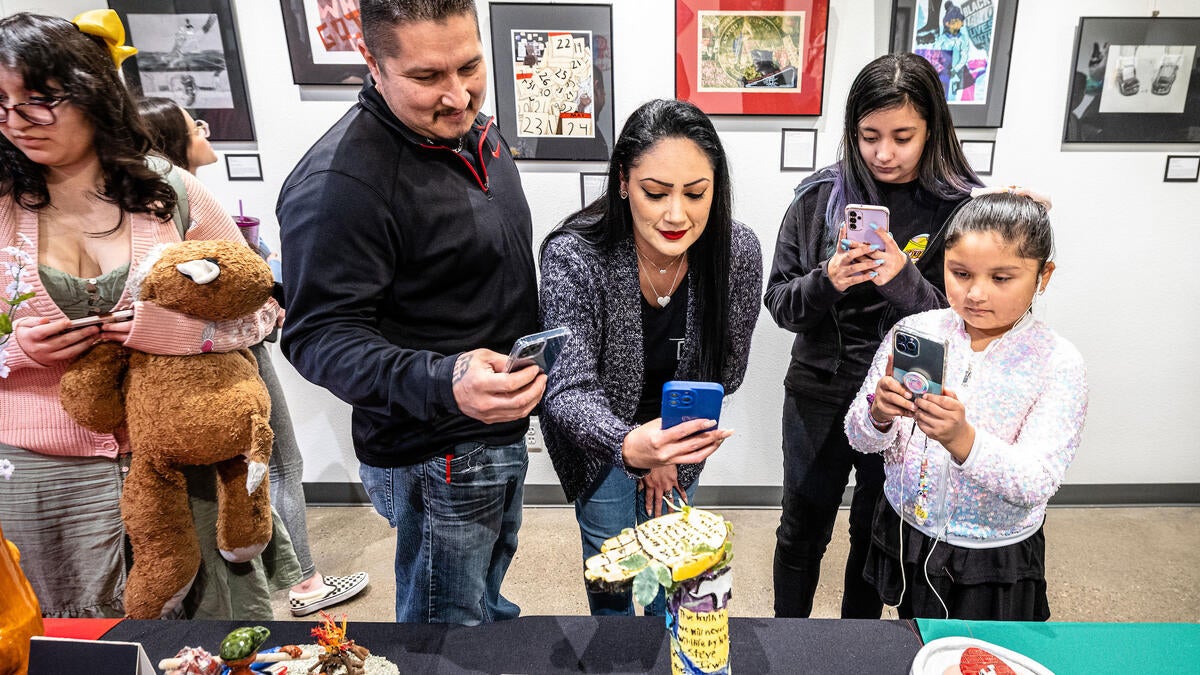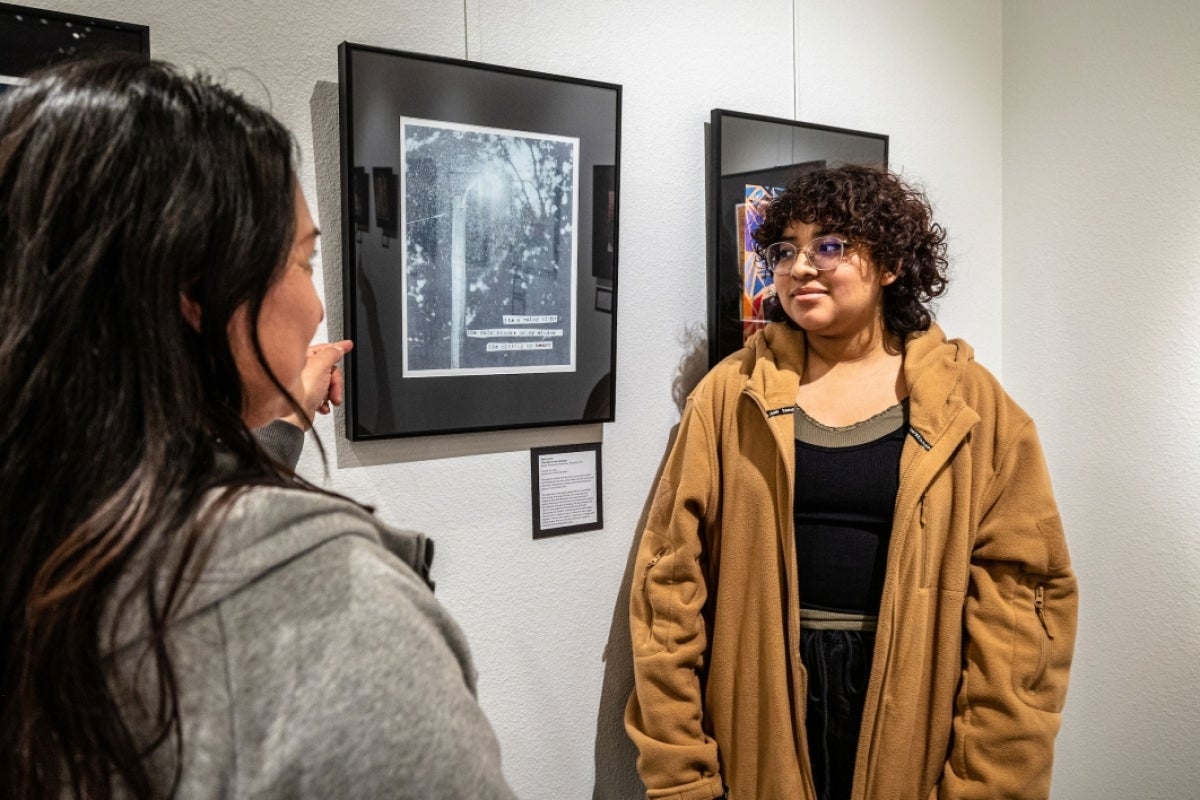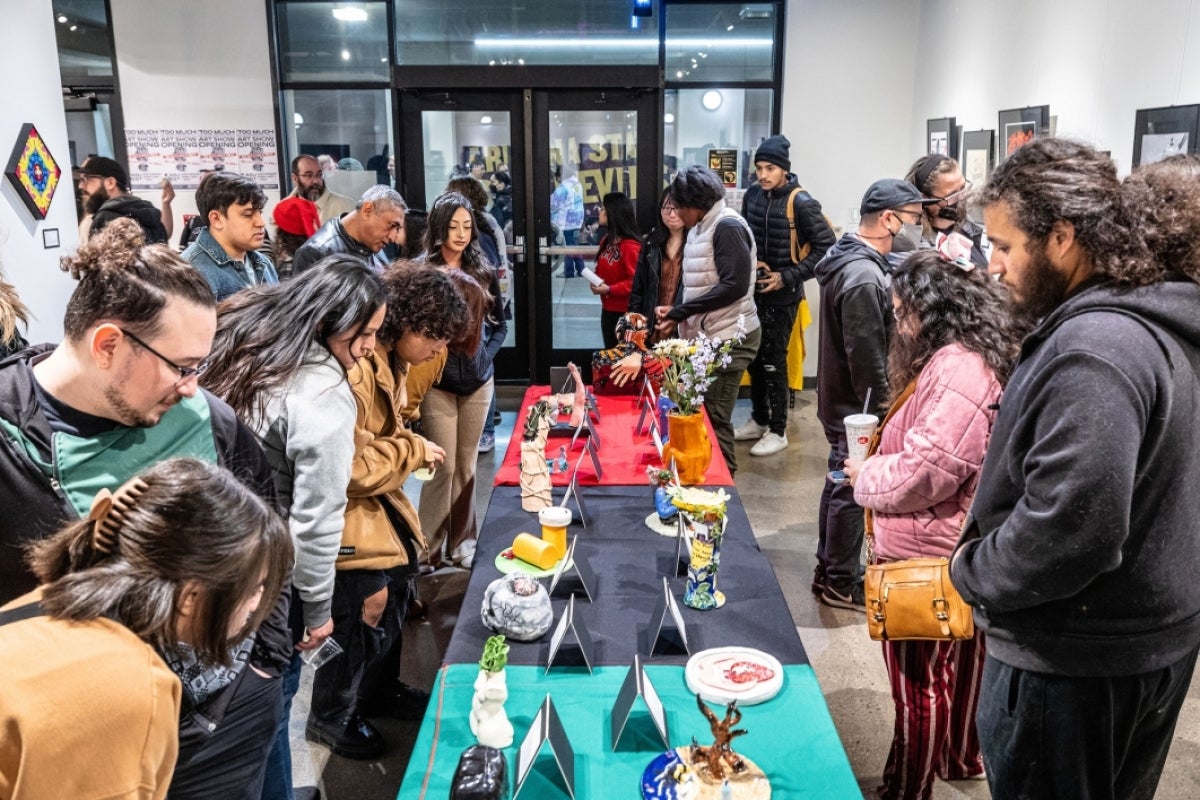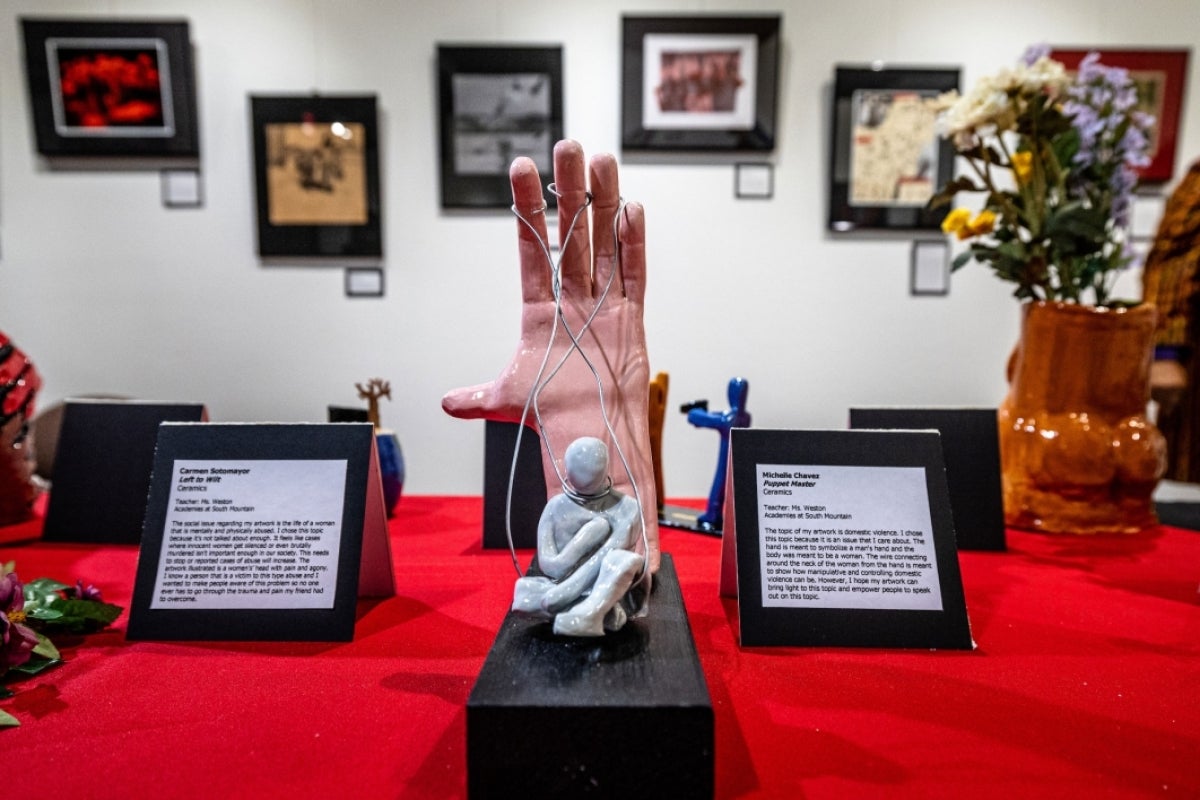A little more than a year ago, Charles St. Clair and Matthew King had a conversation.
St. Clair, technical director in the School of Humanities, Arts and Cultural Studies within ASU's New College of Interdisciplinary Arts and Sciences, wanted King’s art class at Academies at South Mountain high school to have an exhibit displayed this February as part of Black History Month.
As the two men discussed what the exhibit might be, King thought about everything his students had endured — physically, emotionally and socially the last few years.
The COVID-19 pandemic. The social justice movement. The political environment.
It was too much, King thought.
That conversation sparked the theme of the exhibit, which will be on display at the ArtSpace West Gallery on Arizona State University's West campus through Feb. 23 and can be viewed from noon to 5 p.m. Monday through Thursday or by appointment.
It's a two-part title: “This Is Too Much, We Didn’t Ask For This” and “Sometimes We Just Want To Forget About It.”
“It’s a response to what the last couple of years have been like for our students,” said King, who, along with teachers Crowe Hajenga, Alex Killion, Megan McRae, Vivian Spiegelman and Kayla Weston, head the magnet visual arts program for the Phoenix Union High School District. “I mean, it’s been a lot. So, this is too much, we didn’t ask for this and we have things we want to say about it.
The exhibit — which includes hand drawings, digital art, ceramics, blackout poetry, animated comic strips and print art — is set up to naturally transition from the chaos of the last two years to the need for peace.
To the left of a column that separates the room, and just inside the entrance, are the students’ pieces depicting their response to societal issues.
Then, as visitors take a right to the other side of the room, they’ll see pieces that give the students happiness or joy.
“We spent a lot of time kind of figuring out exactly how we wanted to do that,” King said. “We intentionally set it up to get a feeling of tension, and then on the vibe side, the artwork is set up in a much more calming fashion.”
St. Clair said the exhibit accomplishes two New College objectives: Reaching out to the surrounding community, and giving minority artists an opportunity to share their work and have that work presented to a panel of judges.
“It was important to us to make sure that the Black and Latino population of South Phoenix knows that this is their home,” St. Clair said. “And ASU is a home to them; that it shouldn’t be foreign to them. By housing a show here, I think it sends that signal.”
During the opening reception on Feb. 1, families and friends walked through the exhibit, marveling at not only the work done by teenagers but their maturity in addressing difficult societal programs through art.
“What I’m really proud of when I look at this stuff is how much my students have their own voice,” King said.
One of those students, Lorelei Shirey, stood by her hand-painted work titled "The Bigger Picture." It depicts a large hand putting out a cigarette and hovering over the “general masses” going about their day-to-day lives in an ashtray. Outside the ashtray is a world the masses can’t access.
“I was trying to get across how the 1% and people in power a lot of times will kind of use the normal people or the general masses as just kind of like pawns to what is going on behind the scenes,” said Shirey, a senior at South Mountain. “So I just wanted to portray an encapsulated space that kind of felt confined, while also showing that there’s all this room outside but no true way to get out.”
On the other side of the room, senior Rain Lyons showed off her digital work "The Rain in the Healing." Using Adobe Illustrator, a photocopier and a typewriter for the text, Lyons illustrated rain falling outside a window, with a haiku at the bottom right of the piece:
"It’s a rainy night
The rain knocks on my window
It's hitting my heart"
“I just love when the rain happens,” Lyons said. “I think it’s very beautiful and just kind of poetic, especially where we live. It doesn’t rain very often in Phoenix, so it’s always just really nice to see. I just kind of wanted to highlight the beauty of the rain.”
St. Clair said he hopes the students’ work was cathartic.
“The exhibit signifies the struggles they’ve been through during the COVID period and how it’s affected their lives,” he said. “This is an opportunity for them to express themselves in a lot of different ways. In today’s society, sometimes we don’t give them the voice they need. This exhibit exemplifies the opportunity for them to have a voice.”
Top photo: Family members Ernie Sandez (left) Beatrice Sandez, Alexis Ibarra, 17, and Destiny Sandez, 7, snap photos of Alexis' "Wildlife" ceramic tribute to Steve Irwin and his dedication to wild animals, during the “This is Too Much" art show opening on Wednesday, Feb. 1, at the ArtSpace West Gallery on ASU’s West campus. Alexis hopes her passion for animals will lead her to a career in veterinary medicine. The free exhibit is open to the public through Feb. 23. Photo by Charlie Leight/ASU News
More Arts, humanities and education

Professor's acoustic research repurposed into relaxing listening sessions for all
Garth Paine, an expert in acoustic ecology, has spent years traveling the world to collect specialized audio recordings.He’s been to Costa Rica and to Ecuador as part of his research into innovative…

Filmmaker Spike Lee’s storytelling skills captivate audience at ASU event
Legendary filmmaker Spike Lee was this year’s distinguished speaker for the Delivering Democracy 2025 dialogue — a free event organized by Arizona State University’s Center for the Study of…

Grammy-winning producer Timbaland to headline ASU music industry conference
The Arizona State University Popular Music program’s Music Industry Career Conference is set to provide students with exposure to exciting career opportunities, music professionals and industry…







